
In Conversation: Wide Angle Ravishankaran!
Oct 03 2024
Wide Angle Ravishankaran, a renowned photographer known for his captivating iconic shots of Tamilnadu political history, gained popularity and won numerous awards while conducting exhibitions. Later, he transitioned into cinematography, working as an assistant to P. C. Sreeram, and eventually made a striking mark as a cinematographer in his own right.

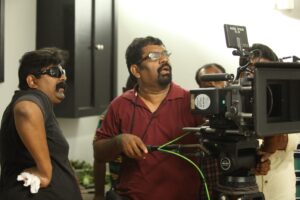
Ravi shankaran shares his interesting trivia from his past to SICA
What inspired your transition from photography to cinematography?
After founding the Wide Angle Photo Agency, I contributed images to both national and international magazines and held five photography exhibitions in Chennai and Tiruvannamalai. After 15 years, I felt it was time to move on, and cinematography was the next natural step in my career. During my fifth photo exhibition, I had the honor of meeting PC Sreeram Sir. I shared my desire to pursue cinematography under his mentorship. Initially, he was surprised, but after several meetings, he agreed to take me on as his apprentice.
How did Ravi Shankaran come to be known as “Wide Angle”?
After I left Indian Express, I joined India Today, but soon realized it wasn’t the right fit. I decided to start my own photography agency, and while searching for a name, I referred to an encyclopedia and came across various photography-related terms. The term “Wide Angle” stood out, so I chose it as the name of my agency. Over time, it became synonymous with my work, and eventually, people started calling me “Wide Angle Ravi Shankaran.”

How did your collaboration with Director Mysskin begin?
I’ve admired Mysskin as a director since his very first film. I always wanted to work with him as a cinematographer, and after Oonaiyum Aatukuttiyum, that opportunity finally came. He narrated the story of Pisasu to me, and even described the climax portion of the film.
How did you prepare for the project?
I joined discussions with Mysskin for about three weeks. During this time, he provided a storyboard for some of the key sequences, complete with details on the lenses that should be used. For the climax, where the girl character is in a frozen condition in the ice bar, I did extensive research and conducted several experiments to make the scene look as realistic as possible.
How was the overall shooting experience?
We initially planned for a 60-day shoot, but we managed to complete it in 52 days. The whole experience was challenging but deeply rewarding, especially seeing our vision come to life on screen.
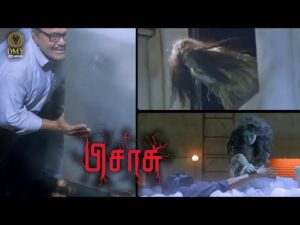
How did you achieve the authentic frozen effect for the climax involving a female character?
To create a realistic frozen effect, we initially considered using a mannequin, taking it to an ice factory to see how the texture would appear. We even explored the idea of getting it done in Germany. However, we found a technician in Ambattur who could create life-like dolls using acrylic. We provided him with images of the female character, and he crafted a highly detailed acrylic replica. We then froze this replica and used smoke effects to enhance the visual impact, resulting in a stunning and authentic look.
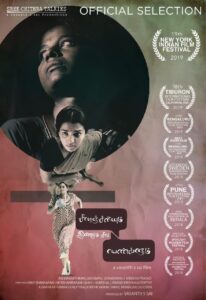
How did you get involved with the National Award-winning OTT film Sivaranjaniyum innum Sila Pengalum directed by Vasanth?
I’ve known Director Vasanth since my days as a journalist, and I’ve always admired his visual sense. After Pisasu happened, I got a call from him about working on Sivaranjaniyum Sila Pengalum, an anthology of three stories about women. It was an exciting opportunity, and I was eager to collaborate.
At the beginning it was not aimed for OTT it was for a theatrical format…but when we completed the project, the dynamics of OTT was more popular than theatre and this project had a ideal OTT release
What were some of the challenges you faced while shooting the film?
One of the main challenges was shooting the stories in confined spaces. I tried to make the scenes feel more candid by using a mise-en-scène approach, closely following the characters. Lighting-wise, I focused on using ambient light as much as possible to maintain an authentic look. It was a challenging experience, but the recognition I received for the work made it all worthwhile.

Your debut film Thirutu Payale had some unique visual styles, including extreme wide-angle shots. How did you approach the cinematography?
When I heard the narration from Director Susi Ganesan, I decided to approach the film in an out-of-the-box way. I divided the visuals into three segments, each treated with an RGB color scheme. Red was used for the flashback scenes, while the Australia portion was treated with a blue tone, and I shot it without using a single artificial light. My photography background helped me during these 60 days. The Chennai portion, which mostly took place at a golf ground during the night, was treated with green and black tones.
Why did you choose extreme wide-angle shots for the horse race scene?
For the horse race scene, I wanted the audience to experience a sense of weirdness and disorientation, so I used an extreme wide-angle, distorted view. It was an intentional choice to give the scene a unique and dynamic visual feel.
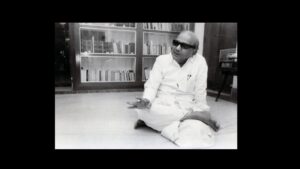
One of your most iconic photographs is of Kalaignar Karunanidhi. Can you tell us more about how that image came to be?
I was doing a photoshoot of Tamil writers for a popular magazine, Subha Mangala, for a Deepavali issue. We wanted an interview with Karunanidhi, and I aimed to create a strikingly different image of him, considering his stature as both a great politician and a writer. One image that came to mind was from the wedding of the great actor Sivaji Ganesan, where Sivaji, MGR, and Kannadasan—all legends—were sitting on the floor.

How did you convince Kalaignar Karunanidhi to pose differently?
I wanted Kalaignar to be photographed sitting on the floor, but he was hesitant and asked me why. I told him that for many years, people, including myself, had been photographing him in the same way. He then asked what I would do if he refused, and I replied that I would use an older image from my collection instead of shooting the same way again. He appreciated my perspective and agreed. I used a bounced flash lighting technique, which was rare at that time, and captured the shot of him sitting on the floor. After the image was published, he was very pleased and praised my work for nearly an hour. It eventually became an iconic image in Tamil Nadu’s history.

Can you tell us about your famous image of former Chief Minister J. Jayalalithaa?
During my college days, I started assisting Subha Sundaram, a popular photographer, and I had the opportunity to photograph Jayalalithaa when she had just entered the political arena. She had a knack for speaking good English, and we often communicated in English, which helped establish a friendly rapport.
How did you come to photograph her during her campaign?
One time, a correspondent from Delhi’s Probe magazine came to interview her, and I asked for permission to join. To my surprise, she invited me to accompany her on her five-day campaign. Even then, I could sense that she would become the future Chief Minister of Tamil Nadu, and I wanted to capture a more interesting image of her.
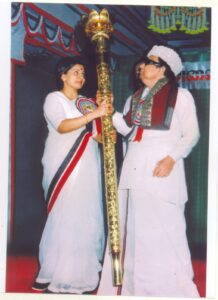
What was the moment you captured that became iconic?
While in Tirunelveli, I captured a moment where she had a wide smile during a conversation with someone. It was a fraction of a moment, but it perfectly conveyed her charisma. Upon returning to Madras, I processed the negative and printed it as a 10×8. Initially satisfied with that size, I later did a huge blow-up at 24×20 and presented it to her. She told me that this photo would play an important role in her political career. Eventually, that image became a poster that has remained iconic to this day.
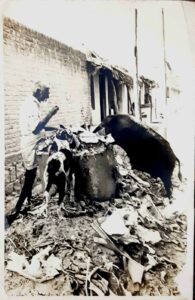
Can you share some of your most favorite images as a photographer?
I have several favorites. One was from a marriage event, where I captured a powerful image of a dustbin being shared by a man, a dog, and a pig early in the morning. It was published in Vikatan magazine and received over 700 letters from readers. Apart from that, I also have memorable images from a fire accident, riots, and scenes at the LIC building—all of which have left a lasting impression on me.
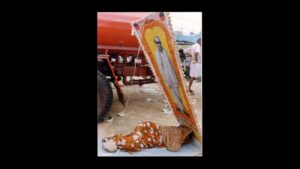
Do you have an interest in music and literature?
Yes, my passion lies deeply in literature, and I am fortunate to have many eminent writers as friends, with a profound understanding of their works. The same goes for music. During one December Carnatic season, I dedicated an entire month to capturing musicians on stage in candid moments, using only natural light. This approach broke the conventional style of photographing musicians at that time, which often resembled passport photos. This project helped establish my own reputation and unique branding as a photographer.
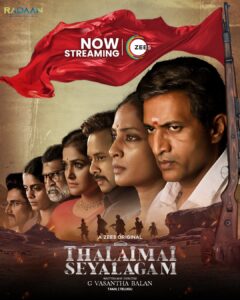
Can you tell us about your work on the recent hit web series Thalaimai Seyalagam, directed by the critically acclaimed director Vasantha Balan?
Thalaimai Seyalagam delves into the intricate fictional world of Tamil Nadu politics, highlighting the power struggles within the ruling establishment and their far-reaching effects. As the Director of Photography, my focus was on creating a strong sense of geographical establishment in the exterior shots. Since much of the story unfolds in interiors, I aimed to differentiate the atmosphere of each character’s space. For example, the Chief Minister’s house was lit brightly, while the secretary’s house had dim lighting to evoke a sense of secrecy. This contrast helped visually convey the different roles and personalities of the characters.
Article by
CJ Rajkumar
Author/ Cinematographer
